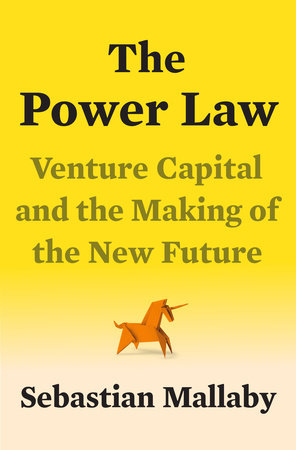Sebastian Mallaby has just published a new book about Venture Capital which looks very interesting. I have already explained here what the Power Law is and will not do it again. But I will quote Mallaby as I do when I read good books.
About the term : “Venture capital” had also cropped up in 1938 when Lammont du Pont, the president of E. I. du Pont de Nemours & Company spoke before the US Senate Committee to Investigate Unemployment and Relief. “By Venture Capital I mean that capital which will go into an enterprise and not expect an immediate return, but will take its chances on getting an ultimate return” du Pont clarified. […] but this phrase making did not stick and the term was not widely used until at least the 60s. [Note 28 page 418]
And what about this : “All progress depends upon the unreasonable man, the creatively maladjusted. Most people think improbable ideas are unimportant, but the only thing that’s important is something that’s improbable”. From Vinod Khosla [Page 3]
About the return of VC. The normal distribution applies to size, weight of individuals, traditional stock markets, but the power law applies to the exceptional – wealth of individuals when not really regulated, as well as venture capital: Like the 7-foot NBA star, unexpected large price jumps are rare enough and moderate enough that they do not affect the average. The S&P500 budged less than 3% in 7763 days out of 7817 between 1985 and 2015, that is 98% of the time. […] Now consider venture capital. Hosley Bridge is an investment company which had stakes in venture funds that backed 7,000 startups between 1985 and 2014. A small subset of these deals, accounting for just 5% of the capital deployed generated fully 60 percent of all the Hosley Bridge returns. [Page 8]
Examples of Khosla’s deals [Page 10]
| Startup | Investment | Return | Multiple |
| Juniper Networks | $5M | $7B | 1,400 |
| Siara | A few $M | $1,5B | >150 |
| Cerent | $8M | Bought for $7B |
About predictions: The revolutions that will matter – the big disruptions that create wealth for inventors [and investors! HL note] and anxiety for workers, or that scramble the geopolitical balance and alter human relations – cannot be predicted based on extrapolations of past data, precisely because such revolutions are so thoroughly disruptive. Rather, they will emerge as a result of forces that are too complex to forecast – from the primordial soup of tinkerers and hackers and hubristic dreamers – and all you can know is that the world in ten years will be excitingly different. […] the future can be discovered by means of iterative, venture-backed experiments. It cannot be predicted. [Page 11] “I always tell my CEOs, don’t plan. Keep testing the assumptions and iterating” Khosla again. [Note 32, page 416] All this of course reminds me also about the Black Swan.
Why is venture capital so different from other sources of finance? Most financiers allocate scarce capital based on quantitative analysis. venture capitalists meet people, charm people, and seldom bother with spreadsheets [*]. Most financiers value companies by projecting their cash flows. Venture capitalists frequently back startups before they have cash flows to analyze. Other financiers trade millions of dollars of paper assets in the blink of an eye. Venture capitalists take relatively small stakes in real companies and hold them. Most fundamentally, other financiers extrapolate trends from the past, disregarding the risk of extreme “tail” events. Venture capitalists look for radical departures from the past. Tail events are all they care about. [Page 14]
[*] Academic survey work confirms that one in five venture capitalists do not even attempt to forecast cash flows when making an investment decision. [Note 36 page 416]
All this is from the introductory chapter only and I liked it very much. Maybe more soon but in the mean time, you can always have a look at my visual history of venture capital.

